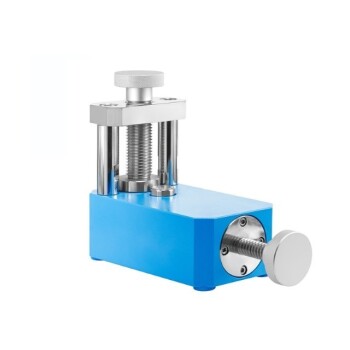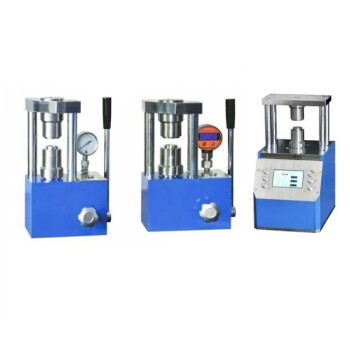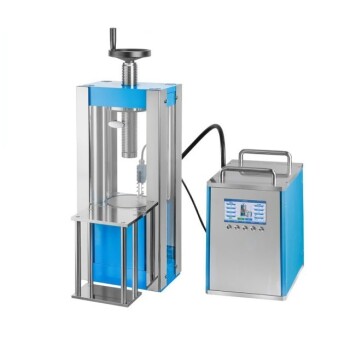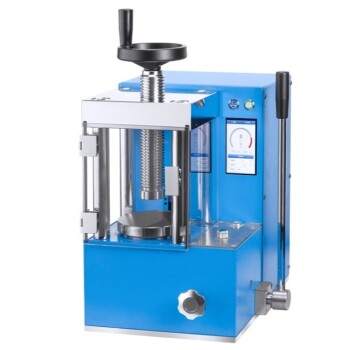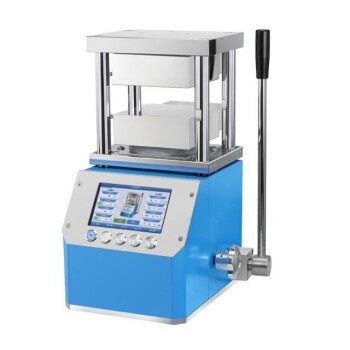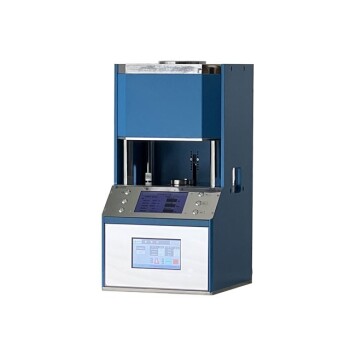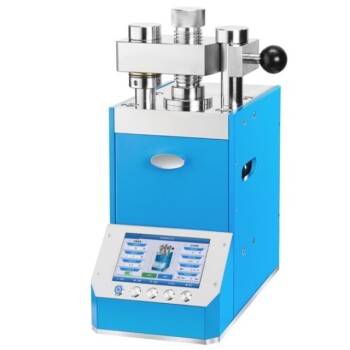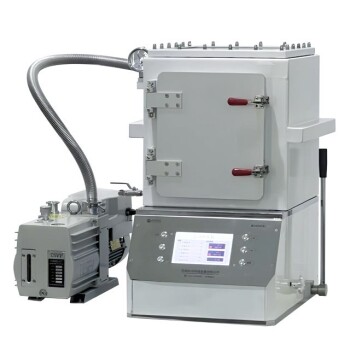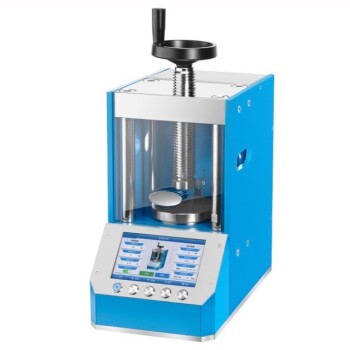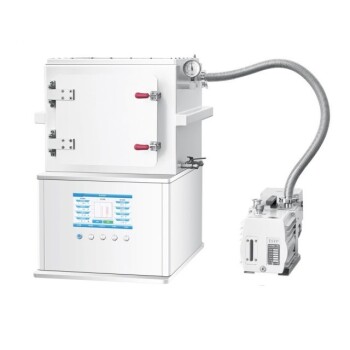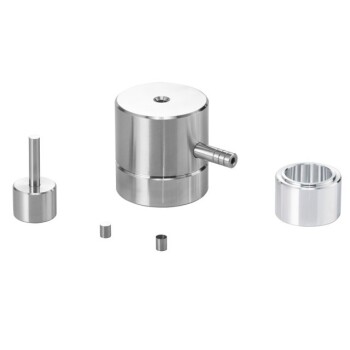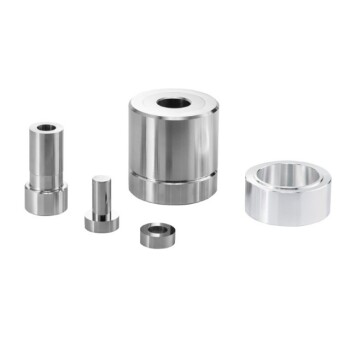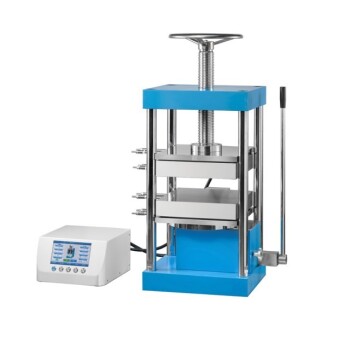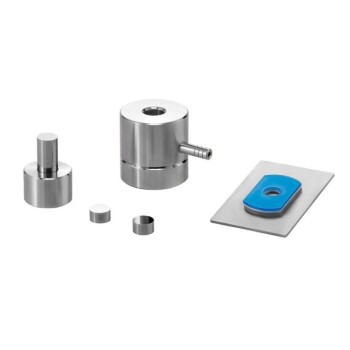In short, a lab pellet press is used to transform loose, powdered samples into a solid, uniform disc. This process is fundamental for preparing materials for analysis with spectrographic techniques like X-ray Fluorescence (XRF) and Infrared (IR) spectroscopy, as it creates a standardized sample form that is essential for achieving accurate and repeatable measurements.
The core challenge in spectroscopy is that inconsistent samples produce inconsistent data. A lab pellet press directly solves this by converting irregular powders into homogenous pellets, ensuring the analytical instrument receives a uniform and representative surface for measurement.

The Core Problem: Why Sample Preparation is Critical
Spectroscopic analysis relies on the interaction of energy—such as X-rays or infrared light—with a sample. The quality of this interaction dictates the quality of your results.
The Challenge of Inconsistent Samples
Loose powders or granular materials present a significant analytical challenge. They have inconsistent density, variable surface texture, and gaps between particles.
This lack of uniformity means the instrument's beam will interact with the material differently from one spot to the next, leading to unreliable data.
How Inconsistency Corrupts Data
When a sample is not homogenous, it can cause problems like light scattering, non-uniform X-ray irradiation, and poor signal-to-noise ratios. The result is poor accuracy, low sensitivity, and a lack of reproducibility, making it impossible to confidently compare different samples.
The Pellet Press as the Solution in Key Spectroscopies
A lab press applies immense pressure to force sample particles together into a dense, solid, and flat disc. This standardized form is ideal for most spectrographic methods.
For X-Ray Fluorescence (XRF) Spectroscopy
In XRF, a primary X-ray beam strikes the sample, causing it to emit secondary fluorescent X-rays that are used for elemental analysis. A pressed pellet is critical for this technique.
By compressing the powder, the press creates a perfectly flat and homogenous surface. This ensures the primary X-ray beam irradiates the sample evenly, reduces scattering, and improves measurement accuracy by minimizing what are known as "particle size effects."
For Infrared (IR) Spectroscopy
In transmission IR spectroscopy, an infrared beam must pass through the sample. For solid samples, this is often accomplished using the KBr pellet method.
A small amount of the powdered sample is mixed with potassium bromide (KBr) powder, which is transparent to infrared light. The press then compacts this mixture into a thin, semi-transparent disc, allowing the IR beam to pass through for a clean and accurate analysis.
Understanding the Trade-offs: Manual vs. Automated Presses
The choice between a manual and an automated press depends on your lab's specific needs for throughput, repeatability, and budget.
Manual Presses: Flexibility and Simplicity
Manual hydraulic presses are ideal for research and development or low-volume labs. They give the operator direct control over the applied force.
While cost-effective and versatile, their primary drawback is operator dependency. The consistency of the pellets relies heavily on the skill and technique of the person using the press.
Automated Presses: Precision and Repeatability
Automated presses operate autonomously, applying a precise, pre-programmed force for a set duration. This completely eliminates operator variability.
These systems are essential for quality control environments where high throughput and consistency are paramount. They provide digital control and data logging, ensuring every pellet is identical, but come at a higher initial cost.
Making the Right Choice for Your Goal
Selecting the correct sample preparation method is just as important as selecting the right analytical instrument.
- If your primary focus is high-throughput quality control: An automated press is essential for its unmatched repeatability and ability to reduce labor costs.
- If your primary focus is research and development with diverse materials: A manual press offers the flexibility to easily adjust parameters for different sample types.
- If your primary focus is the highest possible XRF accuracy: A heated press, which can create fused beads or pellets, is often the best choice for eliminating complex matrix effects.
Ultimately, mastering sample preparation with a pellet press is the foundation for generating reliable and trustworthy spectrographic data.
Summary Table:
| Aspect | Key Details |
|---|---|
| Purpose | Transforms powdered samples into solid, uniform discs for spectroscopy |
| Key Techniques | XRF and IR spectroscopy (e.g., KBr pellet method) |
| Benefits | Ensures homogeneity, reduces scattering, improves accuracy and repeatability |
| Press Types | Manual (flexible, cost-effective) vs. Automated (precise, high-throughput) |
| Ideal Use Cases | R&D, quality control, high-accuracy applications |
Ready to enhance your spectrographic accuracy with reliable sample preparation? KINTEK specializes in lab press machines, including automatic lab presses, isostatic presses, and heated lab presses, designed to meet the needs of laboratories in research, quality control, and material analysis. Our equipment ensures uniform pellets for precise XRF and IR spectroscopy, boosting your data reliability and efficiency. Contact us today to discuss how our solutions can benefit your operations!
Visual Guide
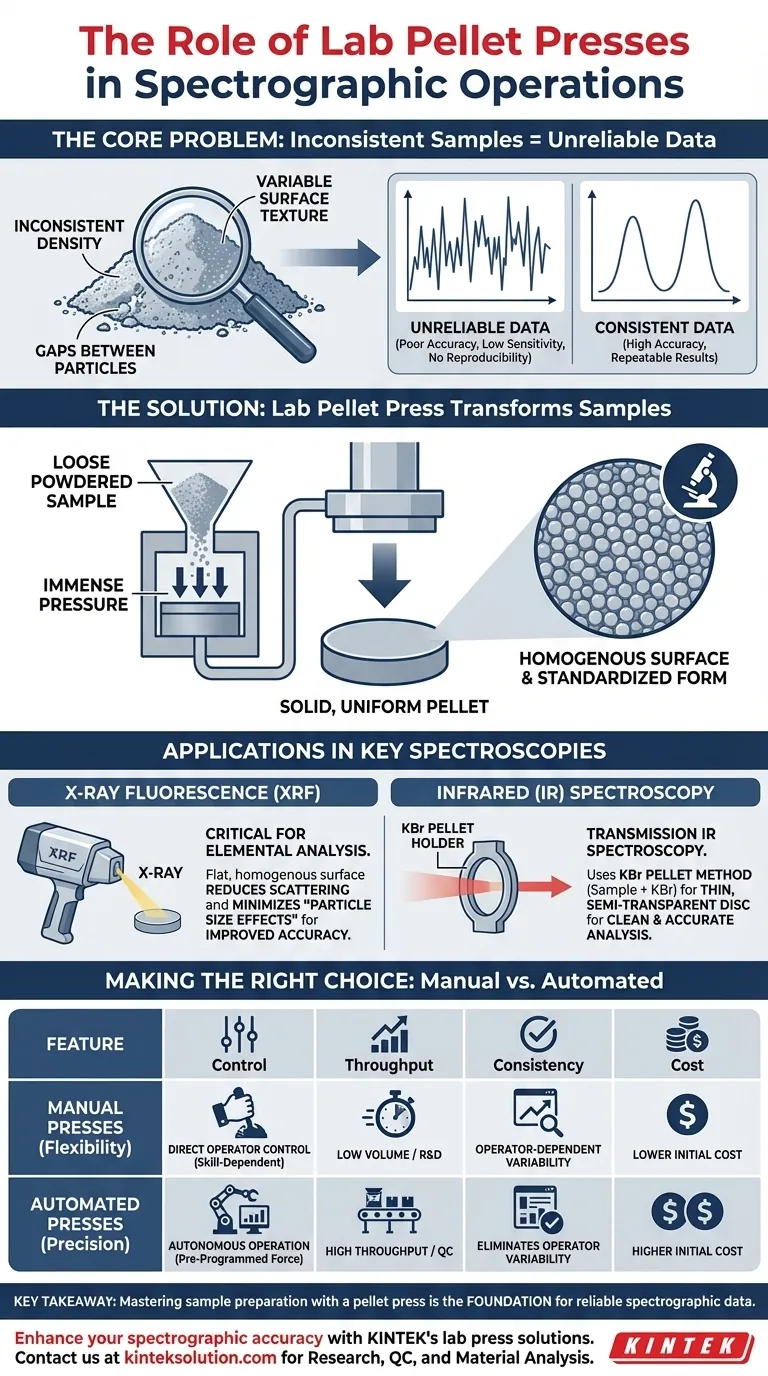
Related Products
- Laboratory Hydraulic Press 2T Lab Pellet Press for KBR FTIR
- Laboratory Hydraulic Press Lab Pellet Press Button Battery Press
- Laboratory Hydraulic Split Electric Lab Pellet Press
- Laboratory Hydraulic Pellet Press for XRF KBR FTIR Lab Press
- Manual Heated Hydraulic Lab Press with Integrated Hot Plates Hydraulic Press Machine
People Also Ask
- How is a hydraulic press used in sample preparation for spectroscopy? Achieve Accurate and Homogeneous Sample Pellets
- How is a laboratory hydraulic press used in sample preparation for FTIR spectroscopy? Create Transparent Pellets for Accurate Analysis
- What are the benefits of reduced physical effort and space requirements in hydraulic mini presses? Boost Lab Efficiency and Flexibility
- What is the overall significance of hydraulic presses in laboratories? Unlock Precision and Power for Your Research
- How are hydraulic presses used in spectroscopy and compositional determination? Enhance Accuracy in FTIR and XRF Analysis
